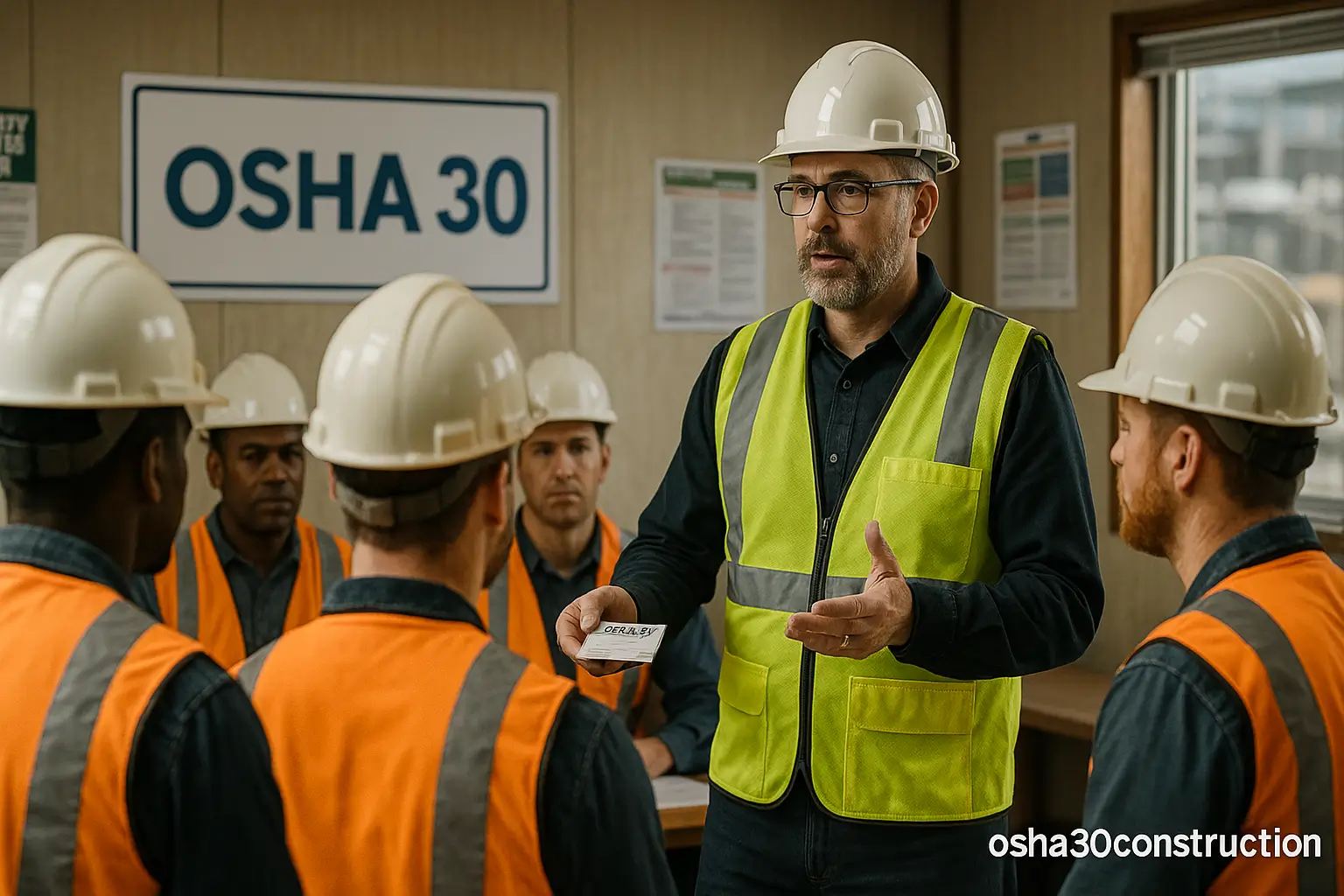The Occupational Safety and Health Administration training courses are a comprehensive guide that holds updated information about hazards. The courses are obligatory to complete in many states in the United States. Considering the rising rates of fatalities and illnesses in the workplace, both general and construction employers and workers are advised to complete the OSHA 10-hour and 30-Hour courses. Whether you’re managing teams, operating heavy machinery, or working with power tools, the OSHA 30-Hour course helps ensure you do so safely and responsibly. Below are the professionals who can gain the most from this essential training. Here’s how it’s beneficial for employees working in different roles.
Professionals Who Can Benefit From OSHA 30-Hour:
Every professional benefits from the OSHA 30-Hour construction course and combats hazardous situations. Whether you’re a foreman enforcing safety protocols or a roofer working at heights, the course delivers real-world strategies tailored to your trade’s risks. In an industry where 1 in 5 worker deaths occur in construction (BLS), this knowledge isn’t just valuable, it’s essential. Here’s how OSHA benefits all:
Construction Site Supervisor
Construction supervisors oversee operations, which puts them in daily contact with high-risk activities. By completing the 30-Hour OSHA Construction course, they can prevent scaffold collapses by learning load capacity standards and reduce electrocution risks from power tool misuse. They can also avoid trenching fatalities with proper shoring techniques and mitigate fall hazards through PPE and guardrail protocols. A trained supervisor can stop heavy equipment strikes by enforcing communication zones.
Project Manager (Construction)
Project managers are responsible for coordinating various aspects of a construction project, often making decisions that affect worker safety. This safety training keeps them equipped with ample knowledge and proactive techniques to combat hazards. They can eliminate costly OSHA fines by mastering adherence documentation and prevent crane accidents through rigging and signaling training. Moreover, they can reduce silica dust exposure with updated respiratory protection plans and help avoid fire hazards from improper flammable material storage. Project managers with complete training can stop ergonomic injuries by optimizing worksite layouts.
Foreman
Foremen supervise day-to-day tasks on the job site. With OSHA 30-Hour training, they can cut struck-by incidents via hard hats and high-vis enforcement. They can prevent chemical burns with SDS (Safety Data Sheet) adherence. Avoid hearing loss through noise monitoring and ear protection, and reduce ladder falls with inspection and angle training. A trained foreman can prevent excavation cave-ins via soil classification training.
General Contractor
General contractors manage subcontractors and ensure projects progress as scheduled. This course helps them monitor safety practices across trades. They can avoid multi-employer citation risks by training subcontractors while preventing roofing falls (the leading cause of death in construction). They can also reduce asbestos exposure during renovations. A trained contractor can mitigate lead poisoning during paint removal and stop forklift tip-overs with load balance training.
Electrician (Construction Industry)
Electricians face the constant risk of electrocution, arc flashes, and burns. They have to stay close to high-intensity wires and machinery. With the help of the OSHA 30-Hour construction course, they can prevent arc flash burns with lockout/tagout (LOTO) mastery. Avoid underground utility strikes via call-before-you-dig protocols. They can reduce confined space electrocutions in crawl spaces. A well-trained electrician can prevent ladder-related shocks near live wires and also mitigate battery acid exposure in solar installations.
Plumber
Plumbers at a construction site often have to work in confined spaces. These are high-risk areas full of toxic gases and little to no ventilation. Through 30-Hour safety training, plumbers can learn about confined space hazards and prevent lead pipe exposure. They can avoid experiencing soldering burns by having proper PPE. They can stay alert about wastewater pathogens and mitigate the risk associated with slips/trips around wet areas.
Carpenter
Carpenters handle sharp tools, power saws, and structural elements. They have to be around machines, wood chips, heavy/lifting objects. With the help of OSHA safety training, they get complete awareness of all possible hazards associated with their work. They can prevent nail gun injuries and formwork collapses. They can avoid getting amputated by mishandling the machinery and stay equipped with the right PPE.
Heavy Equipment Operator
These professionals work with bulldozers, cranes, and forklifts, equipment that can cause severe injuries if mishandled. The OSHA 30-Hour course teaches safe operation practices, spotting techniques, and hazard recognition to prevent rollovers and struck-by accidents.
Ironworker
Ironworkers face deadly risks like rebar impalement and structural falls. OSHA 30 training covers welding fume safety, rigging inspections, and heat stress prevention at heights. They learn to secure steel connections and avoid suspension trauma from harnesses.
Mason (Bricklayer or Concrete Worker)
Masons risk silicosis from cutting blocks and chemical burns from wet concrete. The OSHA 30-Hour Construction Course teaches scaffold load limits, repetitive motion injury prevention, and extreme weather protocols. With proper training, workers can prevent crush injuries during material handling and respiratory damage from dust exposure.
Roofer
Roofers are at a high risk of falls, which is one of the leading causes of death in construction. OSHA 30-Hour training covers fall protection systems, ladder safety, and weather-related precautions. The course helps roofers stay safe while working at heights.
HVAC Installer/Technician (Construction Settings)
HVAC techs face refrigerant poisoning, electrical shocks, and confined space risks. OSHA 30 course guides employers about ventilation for brazing fumes, lockout/tagout for live wires, and ladder stabilization. The course helps employees prevent CO poisoning from faulty furnace installations.
Safety Coordinator / Safety Officer
Safety officers are directly involved in maintaining workplace safety. The OSHA 30-Hour course gives them tools for conducting site inspections, investigating incidents, and implementing safety programs aligned with OSHA standards.
Demolition Worker
Demolition Workers have to witness unplanned collapses and asbestos exposure. These hazards are comprehensively covered in the course. The training includes explosive tool handling, dust suppression, and load-bearing wall identification.
Scaffolding Erector
Scaffolding Erectors build temporary platforms used by other workers. With the help of the 30-Hour safety course, they reinforce the importance of load limits, bracing, and inspection procedures to avoid scaffold collapse and fall hazards.
Drywall Installer
Drywall installers frequently deal with repetitive motion, overhead lifting, and dusty environments. OSHA safety training introduces proper lifting techniques, respiratory protection, and ladder safety to reduce strain and exposure risks.
Painter (Commercial/Industrial Construction)
Painters learn lead abatement, spray booth ventilation, and solvent fire prevention. The course addresses ladder kick-out risks and chemical splash PPE.
Crane Operator
Crane operations involve heavy loads and coordination with ground crews. It’s a high-risk job. The OSHA 30-Hour course teaches rigging safety, signaling communication, and load calculation to prevent tip-overs, collisions, and dropped loads.
Steel Fabricator / Erector
These workers deal with sharp metal edges, welding equipment, and elevated structures. OSHA training supports safe welding practices, PPE selection, and fall protection strategies to reduce injury risks.
Solar Panel Installer (Construction Sites)
Installers learn PV shock hazards, fall arrest on sloped roofs, and battery acid protocols. Training prevents arc flash burns and racking system collapses. OSHA 30-Hour safety training helps reduce solar industry fatalities by 40%.
Conclusion
The OSHA 30-Hour Construction course is more than just a safety requirement, it’s an investment in worker health, productivity, and job site efficiency. With construction’s 20% fatality rate, this training transforms risky practices into compliant, life-saving routines. By completing the training, they not only enhance their own safety but also contribute to a stronger safety culture at the workplace. It’s a step in the right direction.






